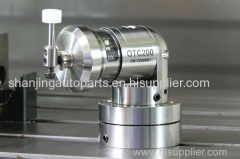
|
Harbin Pioneer M&E Technical Development Co.,Ltd
|
7.TP60 Touch Trigger Probe 1
| Price: | 3600.0 USD |
| Payment Terms: | T/T |
| Place of Origin: | Heilongjiang, China (Mainland) |
|
|
|
| Add to My Favorites | |
| HiSupplier Escrow |
Product Detail
Harbin Pioneer M&E Technical Development Co, Ltd was founded by Mr. Baichun Sun in 1995.
Harbin Pioneer M&E Technical Development Co, Ltd was founded by Mr. Baichun Sun in 1995. After several years of development, the company gradually focused its main business on developing CNC tool setter and touch probe. its production, and sales.We developed probes, tool setters, and a variety of probe styluses of the three series of products. As the first probe manufacturer in the field of CNC machine tool probe in China, Pioneer has always persisted in independent development pioneer machine and tool and worked hard to reach the world advanced level.
TP60 trigger probe includes a trigger probe unit and a taper shank. TP60 probe is a touch trigger, it can used to measure all kinds of solid materials workpieces. TP60 trigger probe is suitable for various specifications of machine centers, CNC boring and milling machines, and drilling-tapping machine centers, etc.
Parameter of TP60 touch trigger probe
TP60: | |
Measuring direction | ±X,±Y,+Z |
Arbitrary direction swinging angle | X-Y±12°, Z +5 mm |
Repeatability (2σ) | ≤ 2 μm; |
Trigger force in Z direction | 1000(g) |
Trigger force in X-Y direction | 65-130(g) |
Battery model | CR2, 3.0 V, 800 mAh |
Model of the standard stylus | M4-P50-RB6-S36 |
Seal grade | IP68 |
Drawing of TP60 Touch Trigger Probe
TP60 Touch Trigger Probe
Application of TP60 Touch Trigger Probe
TP60 probe can be used in various of milling machine,machine center,boring machine and so on.
TP60 can be used on non-conductive workpieces (resin, ceramics, etc.) and non-conductive machine tools (ceramic bearings, etc.)
TP60 is suitable for workpiece alignment and simple inspection operations.
Technical Characteristics of TP60 Touch Trigger Probe
Can be configured with different specifications of taper shank.
The coaxial of probe and shank can be adjusted (the factory precision: ≤5 μm);
Six LED indicator lights are used to show the trigger state of the probe.















